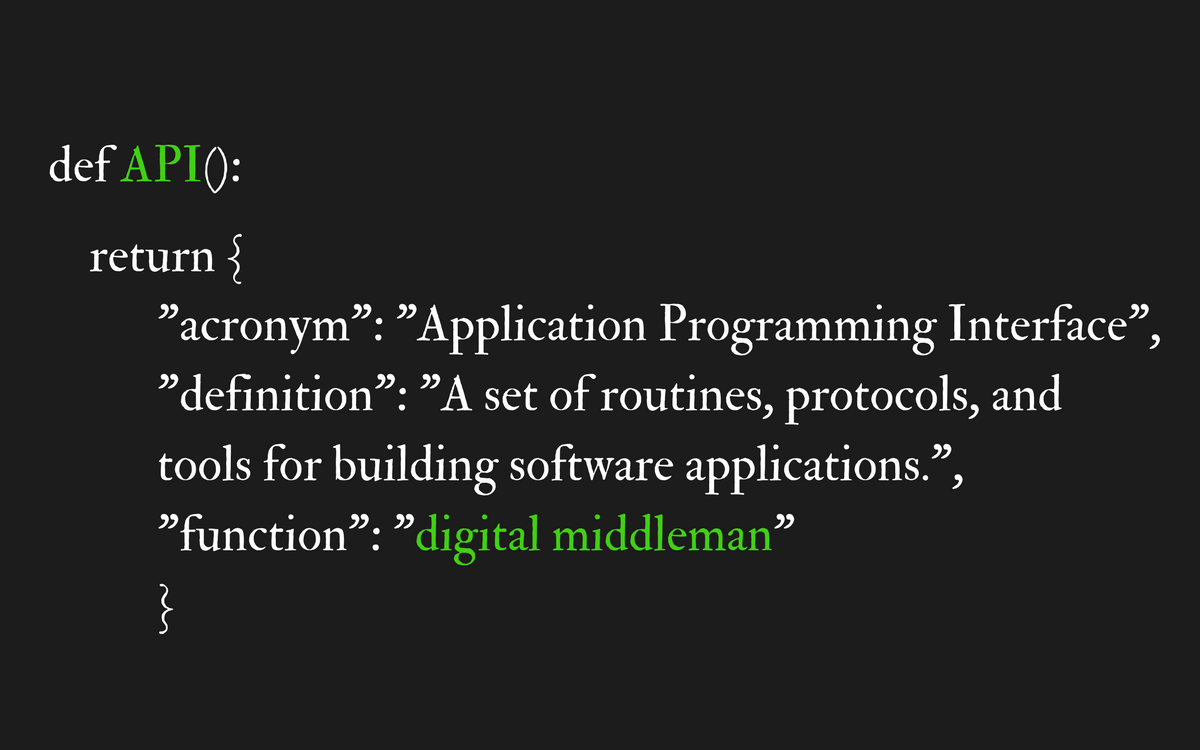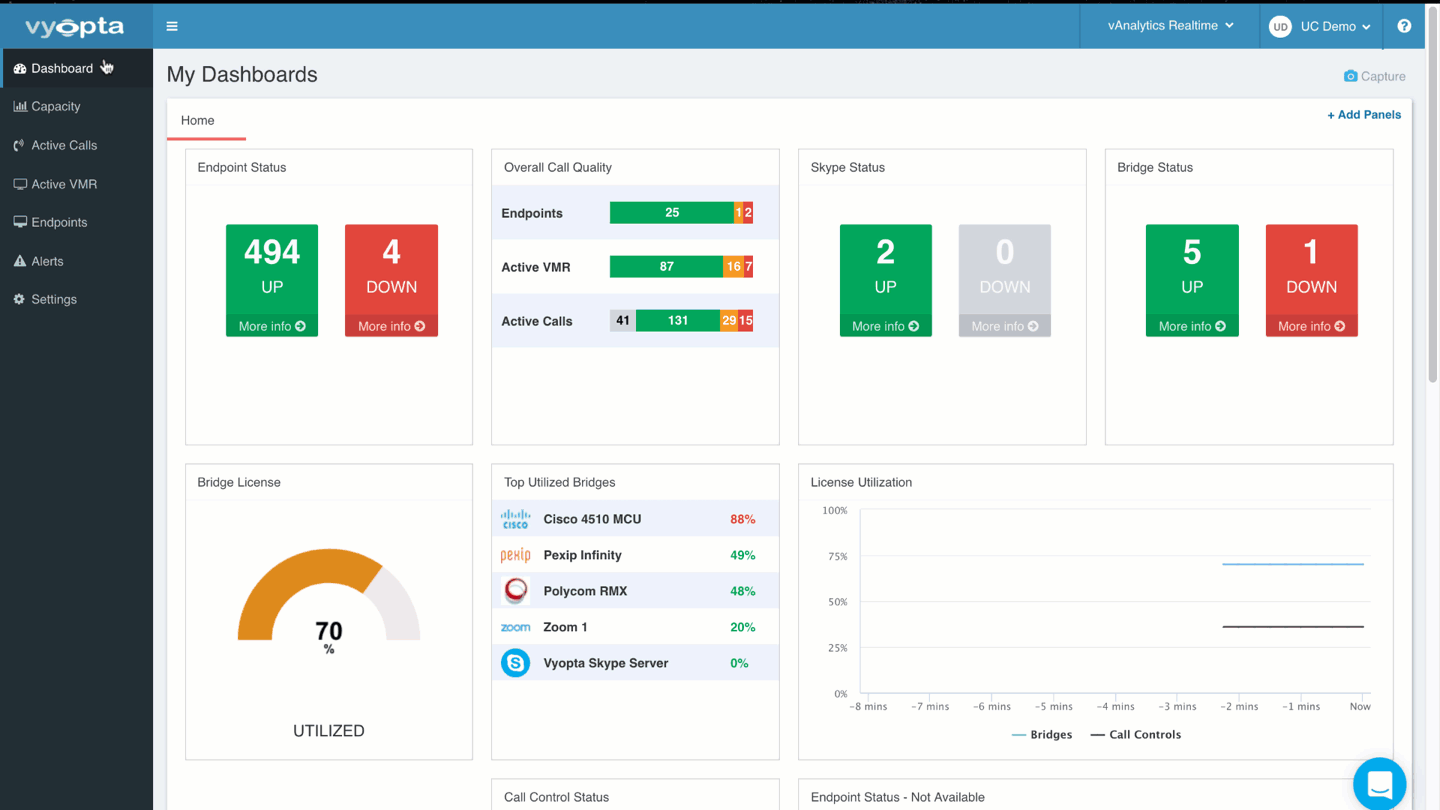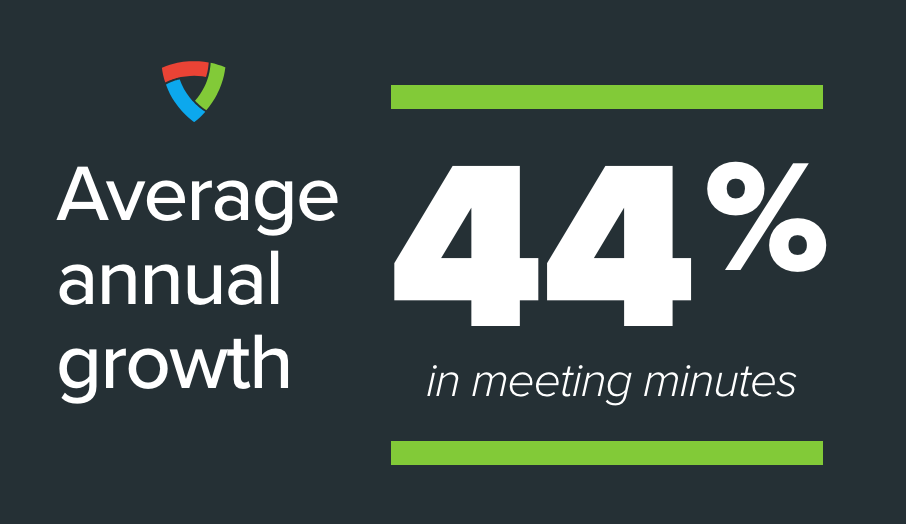“API” is the golden buzzword resonating within the tech industry today. Their usefulness is limitless if you not only understand what APIs are but also how to utilize them for your own benefit.
What is an API?
An application program interface (API) is a set of routines, protocols, and tools used to build software applications by specifying how software components should interact. In other words, an API is a messenger that takes your requests and tells the system what you want to do, and then it returns the response back to you.
To put it into perspective, imagine yourself at a restaurant. You order your food with the server who goes to the kitchen to tell them how you want your food. They then return with your food the way you requested. The waiter is the acting API running back and forth between you and the kitchen (your applications, databases, and devices) to deliver your food (the data and connectivity) you wish to eat (create in your product).
Benefits with exposing or utilizing an API
Keeping in mind what an API is and how it functions, it is vital to understand that APIs have two aspects to consider: the provider (API creator) as well as the user (API integrator). By recognizing both aspects, you can have a better grasp of all the advantages APIs provide.
- Assembling the foundation: You can use APIs as building blocks for your product. For example, Lyft uses one API to handle payments, another API to communicate via text message to riders, and then a phone’s geolocation API to locate the rider.
- Resource savings: Choosing to integrate APIs benefits you by saving time and engineering hours that would have been required to build the same functionality. This allows you to offer a new experience for customers while utilizing what is already familiar and adopted.
- Specialization: By integrating APIs into your product, you can better focus on evolving your core offerings. Doing this leaves the secondary features to companies that were built to focus on those aspects.
- Maintenance: If something goes awry with an API, dedicated teams are immediately on the case to fix the hiccup so that you, the API customer, don’t have to worry about it. This maximizes the API’s functionality “uptime”, which is paramount for your business to operate properly.
- Customization: From a business perspective, providing an API allows your customers to tailor your software to innovate at their own pace. This freedom to customize gives them the opportunity to build the exact solution they need today instead of having to wait for you to release the next version of your software.
Now that you have a better understanding of the value APIs bring to your business, how do you know what API is the right one to apply to your product?
What makes an excellent API
Familiarity, security, and reliability are all attributes to look for in a well-developed API in the broad sense. Other elements to take into consideration when choosing what API to adopt are:
- Adaptability: Customization is pivotal if you have already envisioned how you want to integrate an API in your product or platform. APIs are all used to improve your product, so it is vital to make sure it allows you to keep your product experience consistent instead of ending up looking out of place.
- Superb documentation: Your developer will be most grateful for clear documentation for the API, which is the basic manual guide for APIs. This would include it being easy to read, easy to interpret, and easy to integrate. Include details like incorporating straightforward directions and great code examples.
- Support for developers: Nothing is more frustrating than having trouble and having no one to reach out to for help. Developers are just the same, so having a helpful, developer-specific support team makes a huge difference.
- Opportunities to test: To get a feel for the product and experiment with the code, it is handy to have testing tools available for your engineers to utilize. These tools may include a free test mode, testing sandbox environments, and an API dashboard.
- SDKs in multiple languages: The more software development kits (SDKs) an API has to offer; the higher likelihood the API speaks the same language your company programs do. This will make it easier and quicker to get a functional integration.
The “bottom line”
Today, fusing an API in your product may be the game-changing difference between a swift adoption of your product or being left behind by the competition. By incorporating an API into your product, you can bring a remarkable competitive edge and increased revenue. This can be accomplished with your APIs saving development time, which makes it cheaper than building your solution for a specific feature. APIs come equipped with maintenance, compliance, etc., which make them cheaper in the long run. Overall, APIs can take care of critical but not non-core functions of your company, which allow you to focus on what your company does best.







